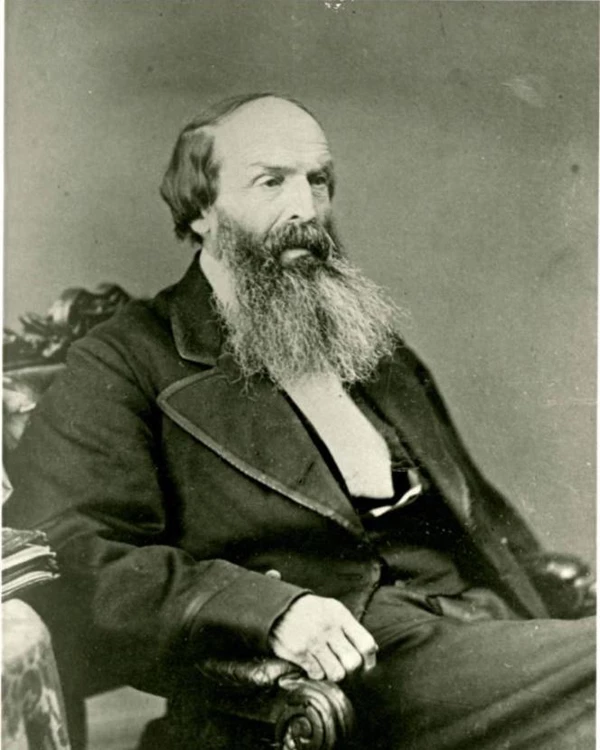Last updated: January 18, 2023
Person
Henry Spalding

Washington State University Libraries' Manuscripts, Archives, and Special Collections (MASC)
Henry Spalding was an ordained minister and Presbyterian missionary to the Nez Perce Nation. He lived and worked with his missionary wife, Eliza, in the present-day states of Idaho and Oregon. He was an outspoken opponent of the spread of Catholicism in the Pacific Northwest. He continued to work amongst the Nez Perce people until his death in 1874.
Henry Harmon Spalding was born in 1803, educated at Lane Theological Seminary, and ordained in 1835 into the Presbyterian ministry. In 1836, Henry and his wife Eliza traveled alongside Marcus and Narcissa Whitman and William Gray over the Rocky Mountains to open missions in the Oregon Country on behalf of the American Board of Commissioners of Foreign Missions (ABCFM). The Spaldings were initially appointed to the Osage tribe, located in present-day Kansas, however they were delayed. When the Whitmans needed another missionary couple to accompany them to Oregon Country, the Spaldings agreed to change their destination.
The Spaldings settled among the nimiipuu, Nez Perce People, while the Whitmans established a mission with the Weyíiletpuu, Cayuse People. The Spaldings’ initial mission site was approximately two miles up Lapwai Creek from the Clearwater River in present-day Idaho. There, they built a rough log structure in November 1836.
Pre-existing tensions and hurt feelings amongst the group of missionaries sowed discord throughout the eleven years of the Oregon missions. There is evidence that suggests that Henry Spalding may have proposed marriage to Narcissa earlier in their lives and that Narcissa refused his offer. Whether this was the cause or not, there was personal conflict between the two missionaries for years. Henry had publicly made a statement that he “would not go into the same mission with her [Narcissa], questioning her judgment.”1 A few years after the mission stations were established, Narcissa wrote to her family that Henry “never ought to have come.”2 During his time as a missionary to the Nez Perce, Henry faced more serious challenges and issues than his rocky personal history with the Whitmans. He struggled to learn the Nez Perce language, and he often directed his fiery temper and the end of a lash at the Nez Perce people to whom he was ministering.
Two years after establishing a mission, the Spaldings moved to the mouth of Lapwai Creek, where it joins the Clearwater River, to continue working with the nimiipuu. Henry, being an ordained minister, was more willing to nominate Nez Perce individuals to be members of the church. In contrast, the other ABCFM missionaries in Oregon Country were much stricter in how they upheld church membership requirements. As a result, Rev. Spalding admitted new converts to the church while the Whitmans admitted none.
After the November 1847 attack on the Whitman mission station, Henry and his family were quickly taken to the home of William Craig by some trusted Nez Perce individuals. There was fear that the alienated and frustrated Cayuse and Nez Perce peoples might look to harm the Spalding family after the death of the Whitmans. About a month after the attack, the Spaldings traveled from Nez Perce Country to Fort Walla Walla to be taken by the Hudson’s Bay Company to the Willamette Valley with the hostages from the Whitman mission station.
Henry lived and worked in the Willamette Valley until 1862 when he returned to Lapwai to continue his religious work among the Nez Perce People. He died there in 1874 and is buried near present-day Nez Perce National Historical Park.
To learn more about Henry and Eliza Spalding, you can visit Whitman Mission National Historical Site in Walla Walla, Washington, or the Spalding site of Nez Perce National Historical Park, in Lapwai, Idaho.
[1] Henry Spalding, diary, July 9th, 1840.
[2] Letter from Narcissa Whitman to her parents, October 14th, 1840.
